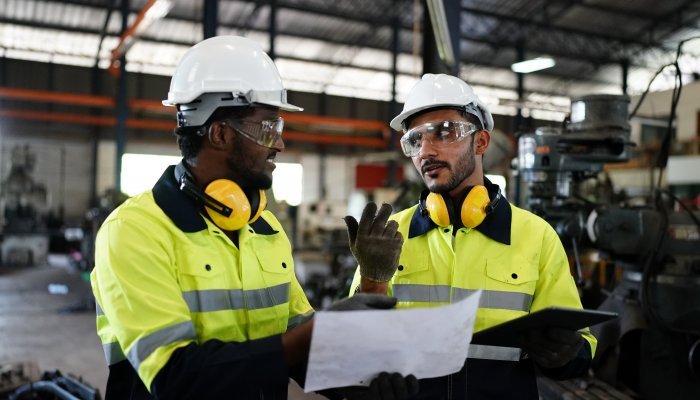Q1 – Why is the development of small and medium-sized enterprises so important?
Small and medium-sized businesses are essential to growth. This was the case before Covid-19 and even more so around the world as people learn to live with it as the virus moves from being a pandemic to being endemic. Don’t take my word for it – let’s all listen to global leaders who are strong advocates for the SDGs. Antonio Guterres, secretary-general of the United Nations, in his opening remarks at the United Nations Global Compact Leaders’ Summit in June 2021, spoke about the central role of business in achieving the SDGs and the need for a more ambitious response from business.
He noted that SMEs are the foundation of local economies and central to this ambition. He spoke about an ‘inclusive green recovery’ requiring collective action. At the same conference, Paul Polman, vice-chair of the UN Global Compact, spoke about the SDGs as the biggest business opportunity of the 21st century and the need for businesses to lead the recovery.
One important pathway to achieve this is to “leverage SMEs and create responsible supply chains”. He also stated that money and technology are abundant – but the problems lie in how they are deployed, and it needs to be done in an inclusive way. The imperative is not unique to South Africa or developing countries. Still, in South Africa, some specific local problems such as skills development and youth unemployment add urgency to the transformation agenda. The dynamic between global challenges and local action is another current and very relevant interaction, yet full of complexity.
Towards the end of 2020, the United Nations launched a new initiative in Africa called #MGGLB – making global goals local business. Sanda Ojiambo, the CEO and executive director of the United Nations Global Compact, set the context for business in post-pandemic Africa and emphasised the need for “local solutions to local needs” to build resilience. She said that “companies are only as healthy as the communities they serve” and that the UN Global Compact 10 Principles, which reflect the SDGs, provide the “foundation for strong and resilient businesses” to support the recovery in Africa. More specifically, she highlighted the need for an inclusive recovery that integrated micro, small and medium-sized enterprises that suffered most during the pandemic in terms of business and job losses. Women and young people are a particular priority in this recovery as they “are often the backbone of micro and small enterprises” and there is an urgency to “employ and empower” the younger generations.
It is this interaction between global and local that offers opportunities for large and small businesses, and this is even more important ‘post pandemic’ as many businesses experienced the consequences of the overdependence of their supply chains on large international producers. So perhaps we may see a more equitable balance and distribution of opportunities (and income) in the future?
Q2 – What is needed to shift the thinking about the role of businesses in tackling the SDGs?
A key point for me is a shift in mindset to a more inclusive way of thinking and acting towards small businesses and small business owners. We are still working with 20th-century ideas and even 19th-century ideas about labour and employment – economic assumptions about how the world works.
The dominant political system of liberal democracy, the market economy and Western society fail to include many ways in which people across many parts of the world earn a living and an income for their families and communities. There are five points here that I would like to make:
2.1 Outdated assumptions
Assumptions about “employment” and opportunities to earn an income – being self-employed; there are social norms and expectations; there are hurdles to navigate (such as banking, insurance, employee benefits, tax and so forth); there are differences around opportunities for people in corporate employ (people with professional qualifications and people with vocational training).
It is not an even playing field – there are many inequalities in access to decent work, training and education, financial services, economic opportunities, and resources. This is not just in Africa and not only in developing countries. There is a need worldwide to recognise and leverage the power of small and medium-sized businesses to facilitate their success rather than create obstacles.
Assumptions about the role of business in society – the conventional view – is to make a profit or the new discussion around the purpose of business to serve society to act for the benefit of society and the environment, and to make a profit. It is sometimes assumed that business will have to “give something up”, but as I will discuss later, this is a false assumption as there are many new opportunities for growth for doing good and doing well.
Assumptions about the power dynamics in the marketplace – who holds the power? Is it the producer, the retail buyer, the consumer, the small local business, the corporate business, the multi-national or the government?
How is that power exercised – self-interest, collective interests, or both?
2.2 Systems thinking
A shift in mindset is needed, not only in corporate business but also in society, in the public sector, in policies and regulation, and in the institutional logic of sectors such as financial services, energy, food production, consumer goods and technology. This requires systemic thinking so that the interconnections and interdependencies between the public sector, the private sector (corporate and SMEs), research and academic institutions, and the non-profit sector are recognised.
2.3 Integration
This mindset is not about ‘alignment’, but as I see it, it is about ‘integration’. For too long, there has been an assumption that public and private sectors are complementary but mutually exclusive. Integration is not ‘adding something on the side’ or doing something ‘extra’ – it is something you should do.
2.4 Opportunities
Most important is a shift from problem-solving, risk management, control and predictability to seeing opportunities. It is the opportunities that provide a leverage point – they are the ideas that generate innovation and new ways of doing things. This leads to the last point.
2.5 Action orientation
Seeing opportunities has a positive momentum – an action orientation. One of the many advantages of a small business is the speed with which it can act. This speed of action can apply to a small enterprise in a local market or a small enterprise in the supply chain of a larger business.
All of these shifts are connected – seeing opportunities requires systems thinking and systems thinking helps to understand integration and to question assumptions, and questioning assumptions means seeing opportunities when others only see problems. It is these opportunities that drive the necessary action orientation that is needed to tackle Agenda 2030. We are already in year two of the Decade of Action – there is still much to be done, and small and medium-sized enterprises have a key contribution to make.
Q3 - There is a new discussion about the purpose of business. Can you comment on this and to what extent this could change the economic role of business?
The purpose of business is a debate that has been debated for more than 50 years, but the conversation has shifted in recent years. Key debates are around maximising profit and shareholder wealth, and another is around a stakeholder approach. There is also a growing discussion that transcends these two options toward integrating social and environmental priorities into the core business purpose, which goes beyond corporate social responsibility and common conceptions of stakeholder management. Indeed, the idea that an organisation can manage its stakeholders is a myth – complex social systems are self-organising, so organisations may engage, interact and collaborate with their stakeholders. Still, it is stretching reality to claim that organisations manage their stakeholders. There are inevitably power dynamics. These need to be navigated, but the assumptions of management around planning, risk management and control are overused.
So, what is purpose? Purpose is a statement about how a business can make a contribution to society – something bigger than any individual or any organisation on its own; something bigger than all of us. It is not only for social enterprises to have a social purpose, but for any commercial business to be commercially successful and contribute to society by integrating SDGs and core business strategy – and all aspects of the business.
And this means it is leaps ahead of Corporate Social Responsibility (CSR), which is good but not enough. Purpose is not something ‘alongside’ the main business operations – it is no alignment, but rather integrated into the mainstream business operations to the finance function. And when I say a social contribution, that would include environmental. A contribution is not simply ‘doing less harm’ – it is making a positive difference.
According to scholar Professor Sandra Waddock, purpose has multiple characteristics:
- It is a reason for being.
- It is a sense of direction – long-term.
- It is a guide for action.
- It is a sense of collective value and value for multiple parties, including stakeholders, but also communities and people who would not typically be considered stakeholders, perhaps because their connection to the organisation is not known or cannot be clearly defined.
- It also has a compelling narrative that creates meaning at multiple levels for multiple people – and over time. It is not as simple as a brand – a brand can be a leverage point, but the narrative of purpose needs to be the heart of the organisation or business.
It is not a mission or a vision. It is bigger than both. A mission tends to be internally focused, while a vision tends to be a single target, whereas a purpose looks externally and has multiple dimensions.
I would also add to this ‘authenticity’ because there is too much ‘greenwashing’ – claiming to be socially relevant while continuing to perpetuate business as usual, pursuing self-interest as a priority and limiting social contribution to CSR and marketing headlines. Lots to say but very little action. The best-known examples of purpose-driven companies are big corporates such as:
- Novo Nordisk – “to drive change to defeat diabetes and other serious chronic diseases”.
- Unilever – The Unilever Sustainable Living Plan, the purpose of which is to make sustainable living commonplace.
- Woolworths – “adding quality to life” through its Good Business Journey.
These principles apply equally to small and medium-sized enterprises and any commercial enterprise. It is an imperative of the 21st century, and there are many opportunities for businesses of all sizes. In some respects, small businesses have the advantage of being innovative, agile and close to the action – they are local, often tech-savvy and attuned to their market.
Q4 – What are some of the opportunities the SDGs present that could be leveraged by small and medium-sized enterprises or by corporate businesses engaging with small and medium-sized enterprises in their supply chain?
First, there is the issue of inclusion in many and multiple forms – addressing systemic barriers to small enterprises: social barriers, policy barriers, education and training, knowledge and experience, incentives and so forth. While barriers remain, the opportunities limit growth and development – unlocking the barriers to open opportunities for small businesses, women, and young people.
So there is much to be done in terms of SDG 10 – reduced inequalities – specifically Targets 10.1 (reduce income inequalities), 10.2 (universal social, economic and political inclusion), 10.3 (equal opportunities), and 10.4 (fiscal and social policies that promote equality).
Financial inclusion is a key aspect of SDG 8 (target 8.10), which is universal access to banking, insurance and financial services. There are gender issues here as well: SDG 5 (target 5A) – equal rights to economic resources, property ownership and financial services.
There are huge issues of youth unemployment. SDG 8 – target 8.3 – supporting job creation and growing enterprises (micro, small and medium-sized businesses) and access to financial services. Financial inclusion – target 8.5 – decent work and equal pay, target 8.8 – protect labour rights and safe working environments. There are also many issues around access to and delivery of quality education at primary and secondary levels.
The opportunities lie beyond the barriers, and unlocking this potential is not only the job of government policy but also the private sector, corporate business, investors, institutional investors such as pension funds, banking and financial services and so forth. These opportunities will not be unlocked with CSR thinking but need integrated thinking and putting the SDGs and social and environmental imperatives at the heart of business and business strategy.
Q5 – What challenges could small and medium-sized businesses encounter in pursuing these opportunities?
“The system” – the way things are done, or not done, the red tape – is a lot to navigate. There is also a long list of regulations – licencing, registration, employment and labour law, banking and access to finance, insurance, safety and security. These challenges create obstacles and mechanisms that exclude or limit how people can earn an income.
- Social norms – the dominant assumption is that if you do not meet the requirements of the regulated sector (a.k.a., the formal business sector), then your business is ‘informal’ – this suggests it is marginalised or perhaps less important. But rather, it is ‘outside the formal systems’.
- What would be needed so that small business enterprises are valued and included – again, the issue of inclusion. SDG 10: including financial inclusion and several other targets in SDG 10 as noted above.
- ‘Regulation’ is another issue around inclusion – understanding licencing, employment regulations (regulatory systems are often a barrier) and even if there are incentives or help, how do you know where to look or who to contact? Again, this is an issue of access and understanding.
- Incentives, or a lack of incentives or imbalance in access to incentives, go hand in hand with regulation and government policy.
- Training. Owners of SMEs need to build their skills over time – they learn as they go and when new skills are needed. But that is tough, especially for someone without business training of some sort, and some types of knowledge are best gained on the job and through experience. So how does the small business owner learn without help or mentorship, and where do they go for that? Needs also change over time – there is much that the energy of one individual can do to start a business, get it established, bring in the orders, deliver and grow. But what do they do once they grow to the point where they need to employ others to grow, expand their customers to bigger companies and corporates, or need more equipment or other resources, including funding?
- A key issue may be navigating the procurement procedures of a potential customer – filling in applications to become approved suppliers, providing documentation, understanding how to prepare an invoice that meets requirements, managing cash flow, and so forth.
This is where government policy for corporates can be leveraged. The incentive is for the corporate to engage with SMEs in their supply chain and use the government enterprise and supplier development (ESD) programmes to help mentor, support and develop new suppliers while maintaining quality and safety standards.
Q6 - What are some pathways for progressing the integration of SDGs, either as standalone SME businesses or for SMEs in the supply chain of corporate business?
7.1 Pathways – public sector and government
· Policies
· Incentives
· SDG specific
7.2 Pathways – Private sector
(a) Training – practical and experiential, mentoring, supplier development
(b) Support – technical expertise or a confirmed order book
(c) Mentoring and development – learning by doing
Training of various kinds, vocational training – SDG 4, target 4.3 – access to affordable, technical, vocational and higher education. Target 4.7 – educating for sustainable development and global citizenship.
An interesting example here: incubators are a well-known mechanism for helping entrepreneurs in the early stages of establishing a business or small enterprise. I have experienced different forms and different levels of success.
1. A corporate incubator – funded and established by a big corporate with support from government ESD schemes providing offices, equipment and training. Very sterile – it was office infrastructure.
2. MEDO founded by Judi Sandrock – incubators (multiple). It was not about office space and equipment but relationships and interactions, learning how to navigate the corporate procurement process, networking, and meeting customers, from consumers to corporate buyers. The key was to understand the needs of the young innovators – to use mobile units that went into townships and local communities, offering workshops and training, support and mentoring and opportunities.
Sandrock’s focus now seems to have moved to science, technology, engineering, and maths (STEM) education and developing opportunities for young people in the aerospace industry and satellite technology.
Q7 - What three things can businesses (of any size) start doing now to contribute to positive outcomes for society and the environment?
- Think big – and differently, think systemically, challenge assumptions and think in multiples.
- Start small – on immediate actions with the purpose in mind – the purpose will help establish milestones along the way. Experiment with new ideas – preto-type (rather than prototype) multiple short, low-cost activities – do not plan all the details – allow for new ideas and outcomes to emerge – provide flexibility to change – do not try and control everything – collaborate.
- Act now – Integrate SDGs into business strategy and business operations. It’s an ongoing process, so be guided by the purpose.
This article originally appeared in the ESD Handbook 2021 and is reprinted with permission.









